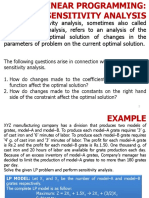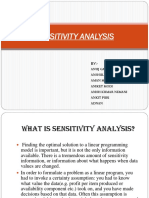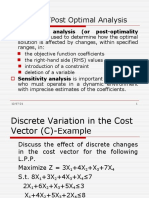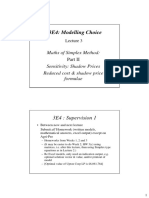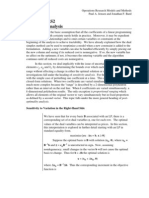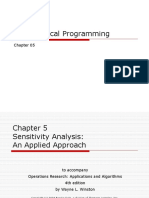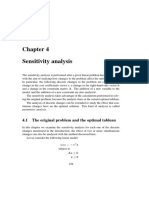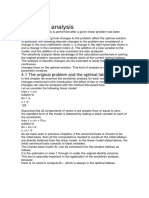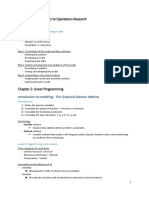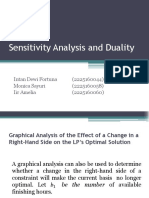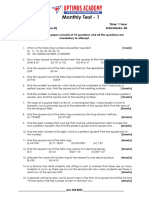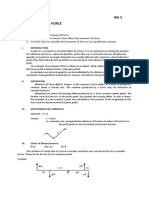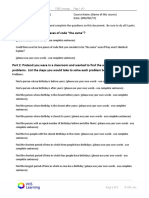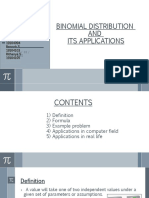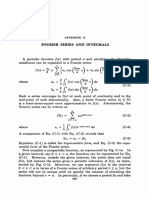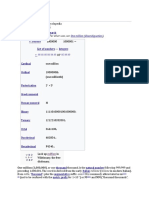0% found this document useful (0 votes)
93 views15 pagesSensitivity Analysis: How Changes in An LP's Parameters Affect The LP's Optimal Solution
Sensitivity analysis examines how changes to an linear program's (LP's) parameters affect its optimal solution. It determines if small changes to objective function coefficients or right-hand sides result in the current basis remaining optimal or a new basis becoming optimal. Sensitivity analysis is important because it allows the optimal solution to be determined without re-solving the LP if a parameter changes within a determined range. Key formulas express an LP's optimal tableau and constraints in terms of its original parameters using the inverse of the basis matrix.
Uploaded by
sirkiberCopyright
© Attribution Non-Commercial (BY-NC)
We take content rights seriously. If you suspect this is your content, claim it here.
Available Formats
Download as PPT, PDF, TXT or read online on Scribd
0% found this document useful (0 votes)
93 views15 pagesSensitivity Analysis: How Changes in An LP's Parameters Affect The LP's Optimal Solution
Sensitivity analysis examines how changes to an linear program's (LP's) parameters affect its optimal solution. It determines if small changes to objective function coefficients or right-hand sides result in the current basis remaining optimal or a new basis becoming optimal. Sensitivity analysis is important because it allows the optimal solution to be determined without re-solving the LP if a parameter changes within a determined range. Key formulas express an LP's optimal tableau and constraints in terms of its original parameters using the inverse of the basis matrix.
Uploaded by
sirkiberCopyright
© Attribution Non-Commercial (BY-NC)
We take content rights seriously. If you suspect this is your content, claim it here.
Available Formats
Download as PPT, PDF, TXT or read online on Scribd
/ 15










